Содержимое файла:
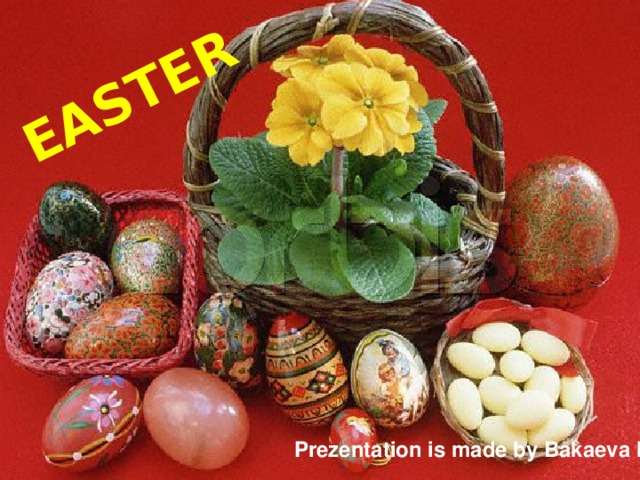
EASTER
Prezentation is made by Bakaeva Irina
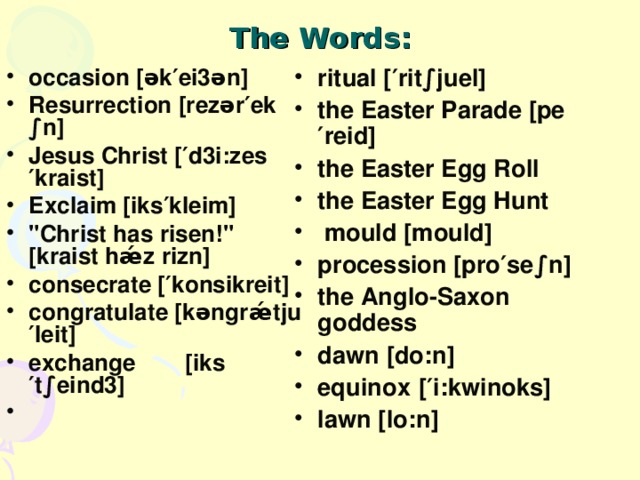
The Words:
- occasion [ək′ei3ən]
- Resurrection [rezər′ek ∫n]
- Jesus Christ [′d3i:zes ′kraist]
- Exclaim [iks′kleim]
- «Christ has risen!» [kraist hǽz rizn]
- consecrate [′konsikreit]
- congratulate [kəngrǽtju′leit]
- exchange [iks′t∫eind3]
- ritual [′rit∫juel]
- the Easter Parade [pe′reid]
- the Easter Egg Roll
- the Easter Egg Hunt
- mould [mould]
- procession [pro′se∫n]
- the Anglo-Saxon goddess
- dawn [do:n]
- equinox [′i:kwinoks]
- lawn [lo:n]
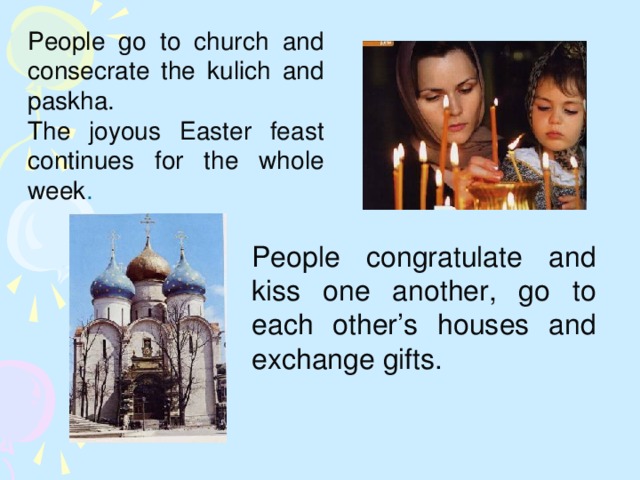
Easter Traditions in Russia
Easter in Russia is celebrated on the first Sunday after the first spring new moon. It usually fell in April. People celebrate the Resurrection of Jesus Christ. On meeting each other people exclaim: «Christ has risen!»
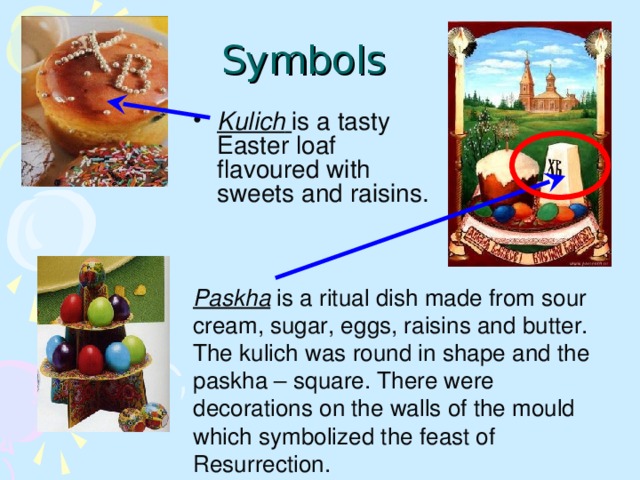
People go to church and consecrate the kulich and paskha.
The joyous Easter feast continues for the whole week .
People congratulate and kiss one another, go to each other’s houses and exchange gifts.
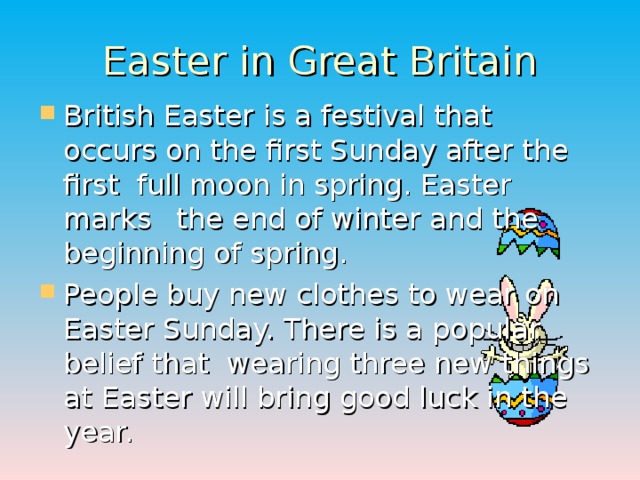
Symbols
- Kulich is a tasty Easter loaf flavoured with sweets and raisins.
Paskha is a ritual dish made from sour cream, sugar, eggs, raisins and butter. The kulich was round in shape and the paskha – square. There were decorations on the walls of the mould which symbolized the feast of Resurrection.
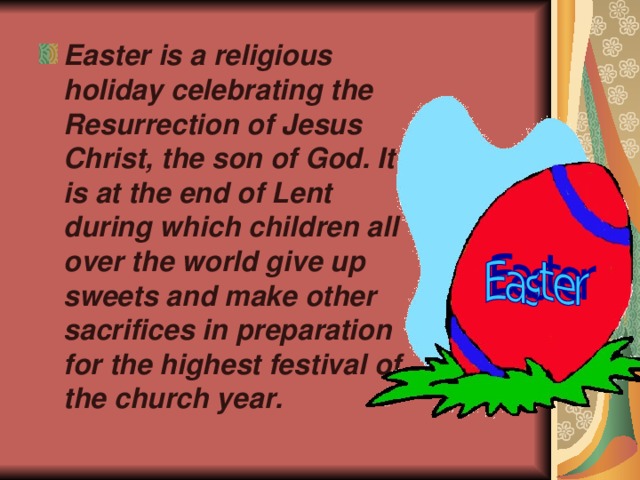
Easter in Great Britain
- British Easter is a festival that occurs on the first Sunday after the first full moon in spring. Easter marks the end of winter and the beginning of spring.
- People buy new clothes to wear on Easter Sunday. There is a popular belief that wearing three new things at Easter will bring good luck in the year.
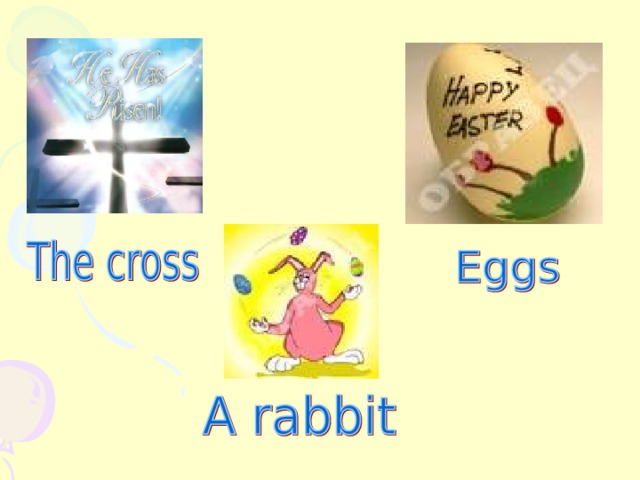
- Easter is a religious holiday celebrating the Resurrection of Jesus Christ, the son of God. It is at the end of Lent during which children all over the world give up sweets and make other sacrifices in preparation for the highest festival of the church year.
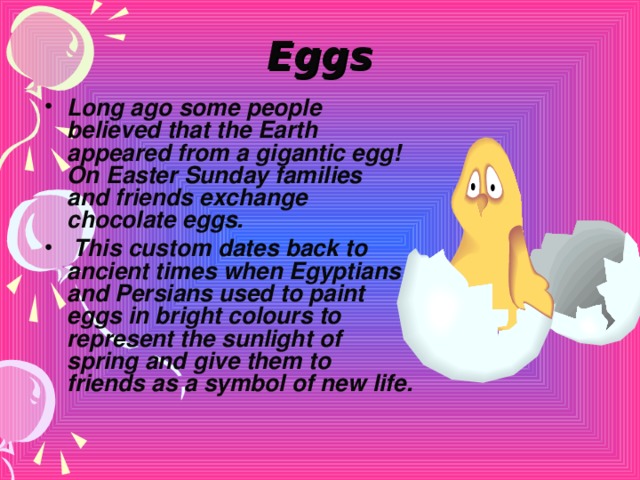
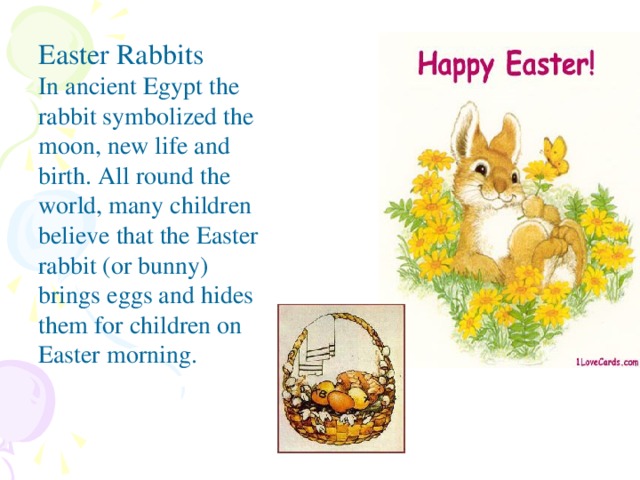
Eggs
- Long ago some people believed that the Earth appeared from a gigantic egg! On Easter Sunday families and friends exchange chocolate eggs.
- This custom dates back to ancient times when Egyptians and Persians used to paint eggs in bright colours to represent the sunlight of spring and give them to friends as a symbol of new life.
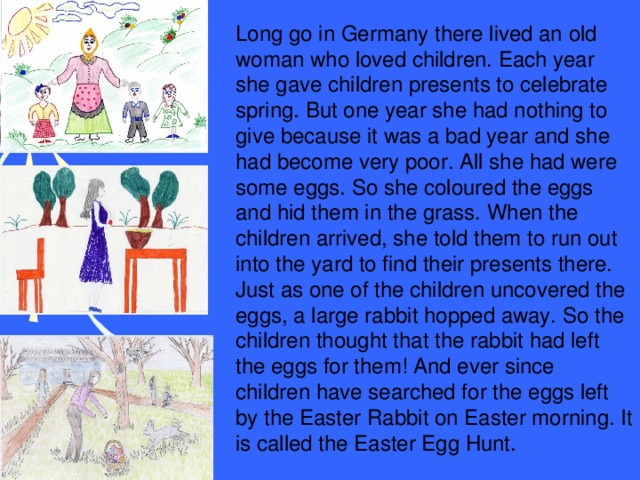
Easter Rabbits
In ancient Egypt the rabbit symbolized the moon, new life and birth. All round the world, many children believe that the Easter rabbit (or bunny) brings eggs and hides them for children on Easter morning.
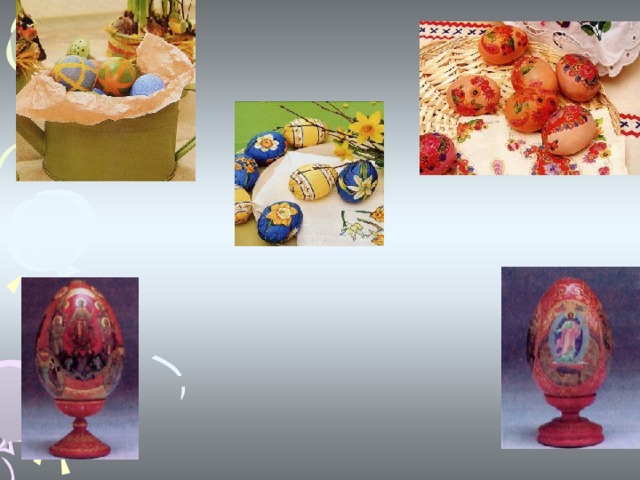
Long go in Germany there lived an old woman who loved children. Each year she gave children presents to celebrate spring. But one year she had nothing to give because it was a bad year and she had become very poor. All she had were some eggs. So she coloured the eggs and hid them in the grass. When the children arrived, she told them to run out into the yard to find their presents there. Just as one of the children uncovered the eggs, a large rabbit hopped away. So the children thought that the rabbit had left the eggs for them! And ever since children have searched for the eggs left by the Easter Rabbit on Easter morning. It is called the Easter Egg Hunt.
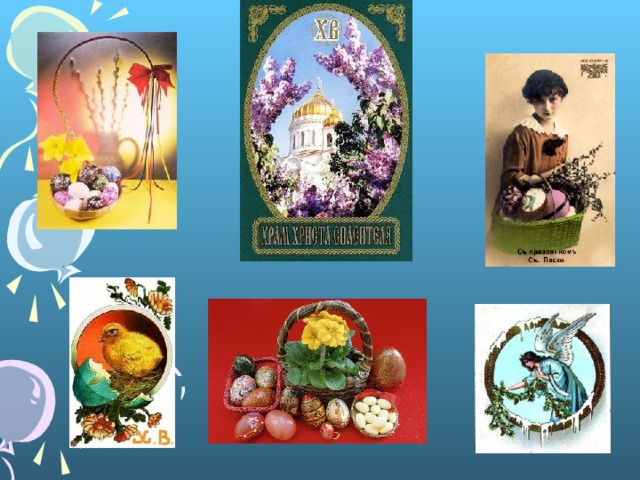
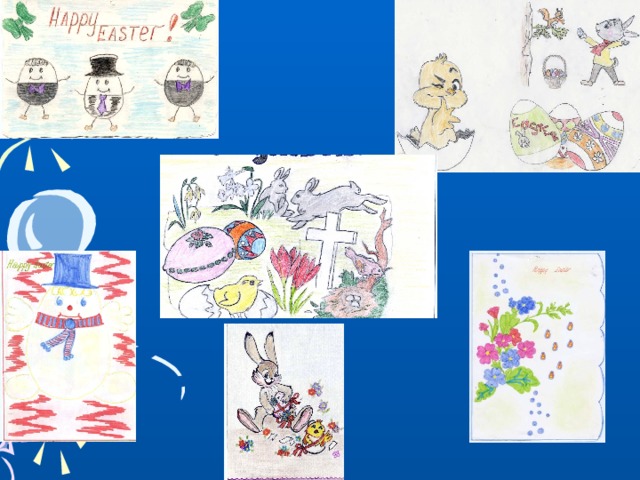
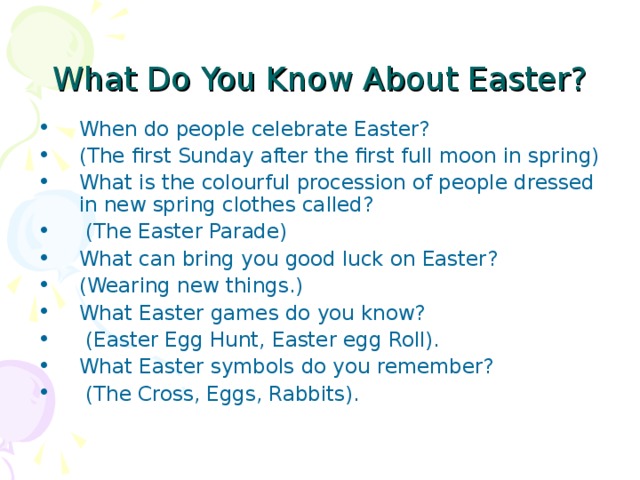

What Do You Know About Easter?
- When do people celebrate Easter?
- (The first Sunday after the first full moon in spring)
- What is the colourful procession of people dressed in new spring clothes called?
- (The Easter Parade)
- What can bring you good luck on Easter?
- (Wearing new things.)
- What Easter games do you know?
- (Easter Egg Hunt, Easter egg Roll).
- What Easter symbols do you remember?
- (The Cross, Eggs, Rabbits).
HAPPY EASTER!